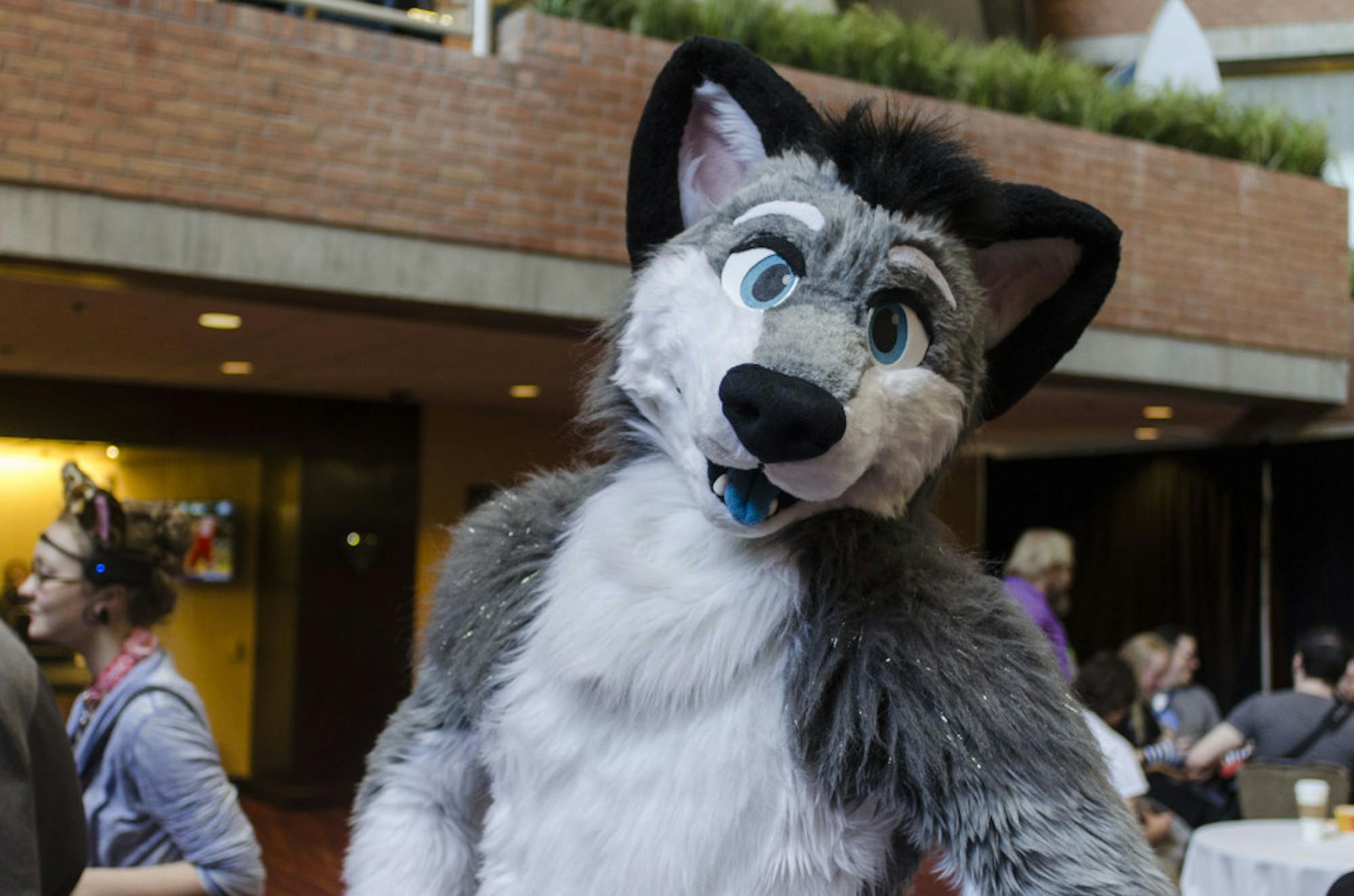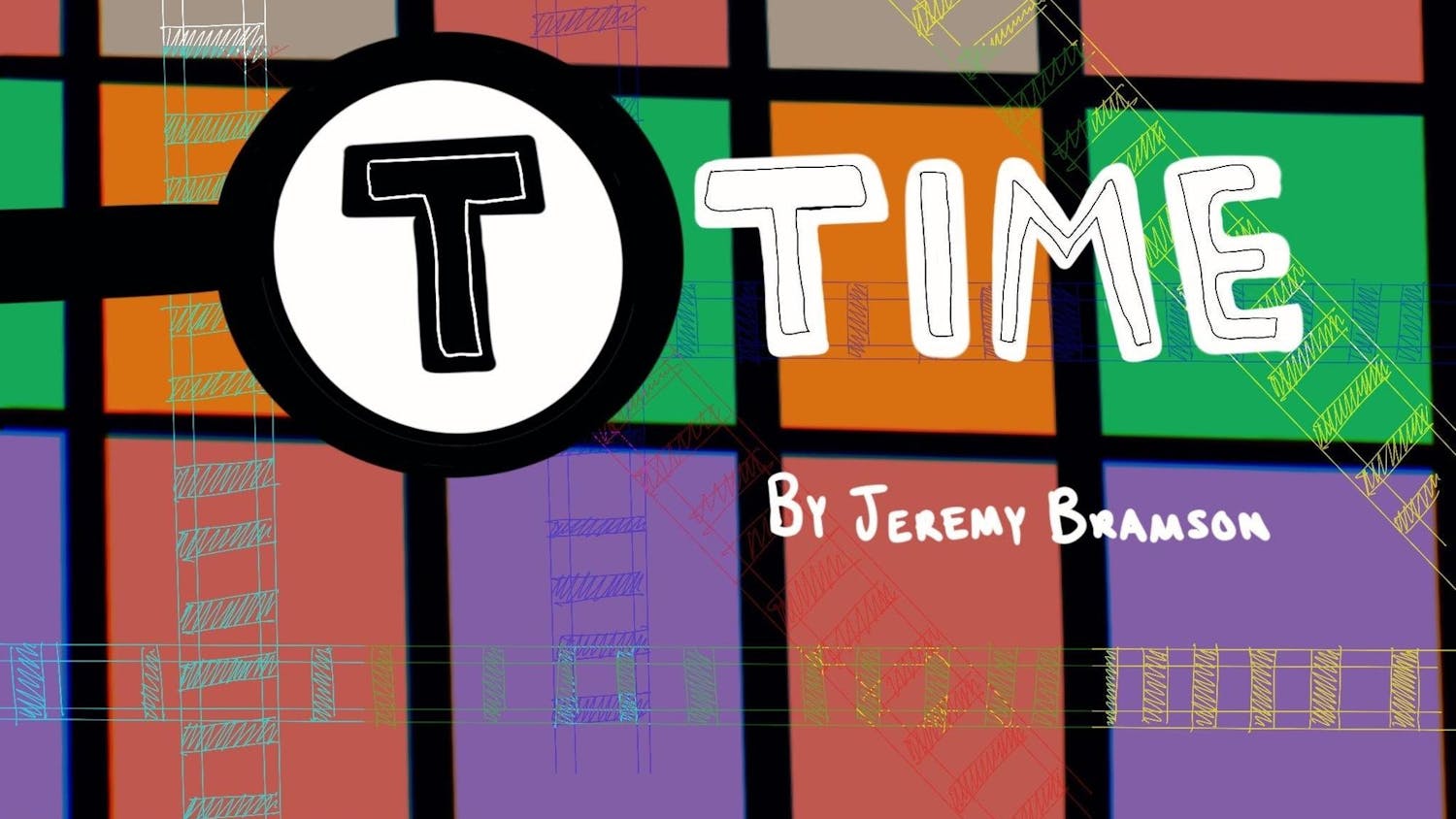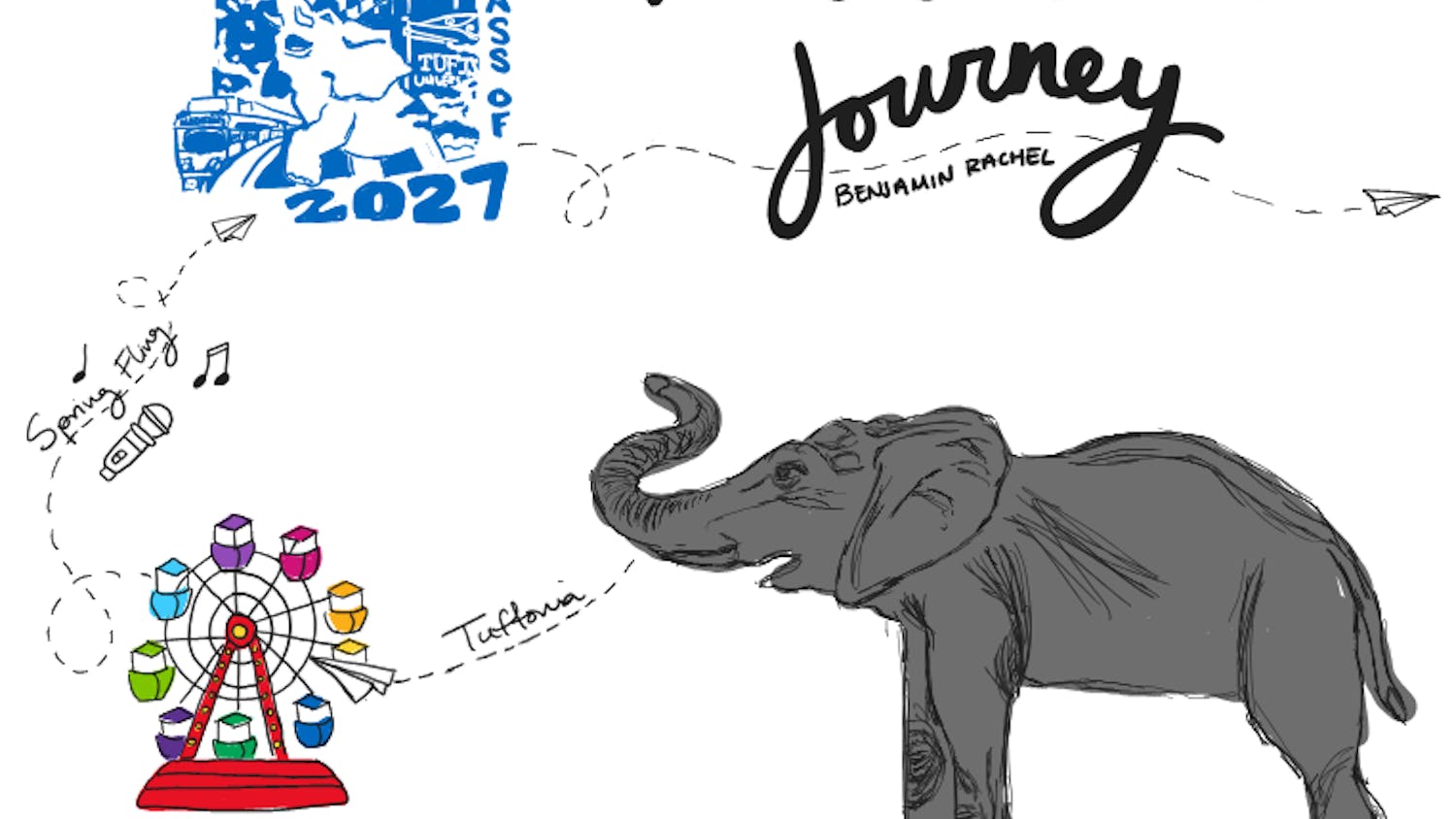It’s a February afternoon in a ballroom at the Hyatt Regency in Cambridge. Tables ring the room, covered in reams of hand-drawn artwork, rows of brightly colored fur tails and paws and stacks of graphic novels.
Attendees of this year’s Anthro New England convention peruse the merchandise, occasionally stopping to embrace one another. Most sport animal ears, onesies or bushy tails. A good number, though, are dressed up like stylized mascots in detailed, full-body suits complete with foam heads. The suits range from the conventional to the fantastical, representing animals both real and imaginary.
This is a convention for furries, members of a decades-old fandom that’s perhaps one of cosplay culture’s most misunderstood.
Furries share an interest in anthropomorphic animals -- i.e. animals that share human characteristics, like speech or upright walking. They draw them, they create fan fiction and music about them, and most importantly, they take them on as their "alternate identities," called "fursonas." At conventions, most prefer to go by their alternate fursona names.
“You create a character and it reflects a part of you,” Coyote Moon, a Tufts student that attended this year’s con, said.
Coyote Moon is relatively new to the fandom and says that her alter ego, a coyote, is still in development.
“When I was little I used to live on a farm and there were lots of coyotes … They used to peek through my window at night and they scared me a lot, so it’s just part of my childhood, waking up in the middle of the night to see coyotes,” she said.
The final weekend in February saw Anthro New England’s first year. As such, it’s a smaller convention: according to its website, it attracted 757 attendees, while the world's largest furry convention,Anthrocon in Pittsburgh, hosted 5,861 people in 2014. Nevertheless, ANE broke the attendance record for a first-time furry con.
Jordan, also known as Kota, is the systems engineer and director of tech for ANE. He organized the convention along with friends Mollie (Nexus) and James (Logn).
“A lot of the eastern furry community lives [in Boston], so why not bring [a] convention to them?” he said. "So that’s how we really got started on this, that and Boston’s a major transportation hub.”
According to Jordan, cons often support charities and donate much of their revenue to an associated organization, which is often animal-related. This year, ANE supported a group called Massachusetts Vest-A-Dog, which provides police dogs with bulletproof vests.
“[The vests] are quite pricy and honestly the state just doesn’t have enough money to fund every single police dog with a bulletproof vest,” Jordan said. “Mass. Vest-A-Dog helps these police dogs be properly equipped for the job.”
On Feb. 28, the convention’s second-to-last day, the "dealer’s den" -- the room in which featured artists and fursuit makers sell their merchandise -- was already bustling by 11 a.m. The fursuit parade, the day’s central event during which everyone in full suit will march through the hotel lobby to the cheers of con-goers and the quizzical looks of other hotel guests, is coming up in a couple of hours. Attendees are milling about, talking with friends and hugging -- the hug is like the furry handshake, especially for those in full suit.
Furries get into the fandom in different ways, though the vast majority find it through the internet. Nighty, who wore a pink coyote suit, said she’s been part of the fandom since she was 12.
“When I was little I joined a graphical chat called Wolfhome, and you were little wolves, and I think that’s how it all started,” she said. “I started drawing, and when I started drawing I think I got sucked into the community.”
Herringbone and Maersey, a pug and a white-tailed deer respectively, were selling needle felts and jewelry at a table in the dealer’s den.
“This is kind of what got me to start making, I guess ... the playfulness of the fandom, and it’s really supportive of makers, it was unlike anything that I was having in my life before,” Herringbone said.
“And I got into it just, ah, through Neopets actually,” Maersey addesd.
Bidis, a self-described traditional forest unicorn, is wearing one of the more elaborate costumes at the con: a deep green fursuit with a wooden horn spiraling out of his forehead.
“I think I was a furry when I was really little and I never really knew it. I was really into anime … and I kind of had like the dog ears, and I’d kind of run around the house,” he said. “When I got older, I was always into art, so because this community is so art-based it really drew me in, and I felt really safe and comfortable.”
Though the con-goers are mostly in their teens and twenties, there are people of all ages and professions here.
“I work full time, and then for fun I dance and I draw and all that, I fix cars,” said Kar, a black dog in an airsoft vest.
Bidis works as an office administrator for Fedex.
“Nobody at work would know it, nobody at work does know it, I think it would surprise everybody to know how normal my life is outside of a furry convention, but it would also shock [co-workers] to know how not-normal my life is,” he said.
Hopeful Monster, whose fursona is a gryphon, is an artist as well as a mom. Her three-and-a-half-year-old attended the convention with her.
“I’m a mom … my husband and I had our first little one who’s actually joining the fandom,” she said. “She loves it, she has her own little costume; it’s giant stuffed animals that dance around and talk to her.”
Meanwhile, Nighty works at a hotel and is studying psychology.
“[It] makes it even more interesting, because I dress up as a dog and then I’m going to be a psychologist,” she said.
According to Nighty, the fandom is a welcoming bunch that often goes out of its way to help its own.
“Everybody’s very accepting; when my husband and I, our furnace got flooded, [and] I never did this before, but I put up a GoFundMe to help pay for the furnace, and the only people I advertised to was the furry community … they paid our furnace repair,” she said.
Nighty is one of many others to feel this connection to the community.
“I just really like the community, when I’m at cons and I’m around people who are like me who are just as weird as I am, so it’s kind of good to see a lot of my friends,” said Dalmy, an inverted dalmatian (black with white spots) selling harnesses and hand paws.
Furries, however, remain an object of confusion or even disgust for many, and have been the subject of bad press and internet vitriol. One episode of "Crime Scene Investigation" (2000 - present) depicted furries as sexual deviants, as did an episode of "Dr. Phil" (2002 - present).
According to con-goers, much of furry depiction in articles, TV shows and on the internet is misdirected.
“[People] immediately think of these creepy basement dwellers that live in their mom’s basement and troll the internet and don’t bathe. I think in any group, there may be someone who fits the negative stereotype, but my experience has been really positive,” Hopeful Monster said.
Bidis said that while a sexual aspect of the furry fandom certainly exists, it isn’t something most furries take part in.
“There’s always that little niche group that kind of oversexualizes things, I wouldn’t deny that it's there, because it is there, but it’s such a small percentage, and I think people are smart enough to keep it in the bedroom,” he said.
Dalmy pointed out that most furries are self-aware when it comes to perceptions about their "strangeness."
“We’re weird, I mean we dress up as animals, we recognize it,” he said. “I think some people think we don’t understand how weird it is, we totally do.”
Maersey said that the public’s misconceptions drew her away from the fandom for some time.
“I actually came away from the community for several years and then came back, partially because of some of the misconceptions … I went to arts school, so a lot of people said, ‘oh that’s lesser,’ it’s not what you should be throwing yourself at,” she said. “And then I’m like, no I actually really like this, this is fun, I’m going back.”
There are some, of course, that embrace the culture’s adult-themed elements. Bushycat, a vendor who sells art in the dealer's den, is one of them.
“In my opinion anybody that says the fandom needs to be totally clean and totally family-friendly and should not involve adult art, bullcrap … there’s this delightful element with lots and lots of naked furs and fetish and just all the adult stuff, anybody who says 'oh, that just doesn’t exist,' yes it does, but there’s a time and a place for everything,” she said.
Some of the art she sells at her table is adult-themed.
“You make sure that it’s not viewed by anybody underage -- it covers their butts, it covers our butts,” she said. “There’s enough room for all kinds of stuff.”
Bushycat has been going to furry conventions since 1996. Over time, she’s seen the culture moving more and more into the mainstream.
“I actually prefer it to be more [of] a fringe, weird kind of a cliquey thing,” she said. “I started this in '96, and it was damned unusual, it was really kind of out there, and I prefer that, I like the weird stuff.”
Whatever their leaning, furries often find acceptance in the community that they’re missing outside of conventions.
“You could walk into any fur convention and just be accepted for who you are, it doesn’t matter what you look like,” Bidis, who is genderfluid, said. “It doesn’t matter your thoughts on this or that; everybody just really accepts you.”






